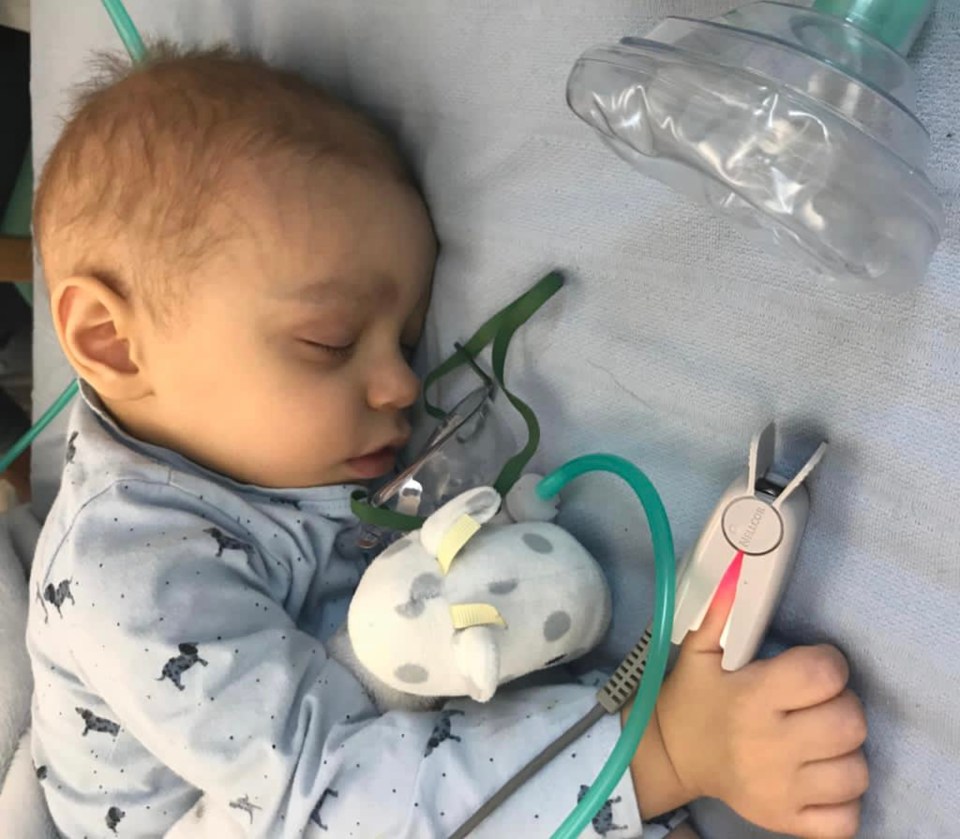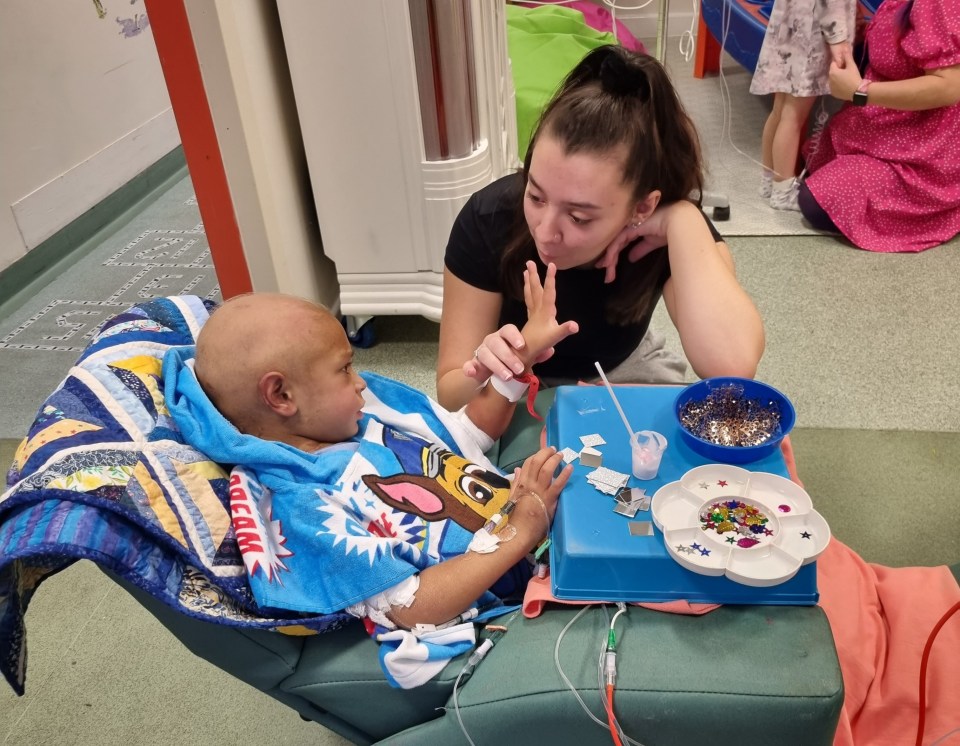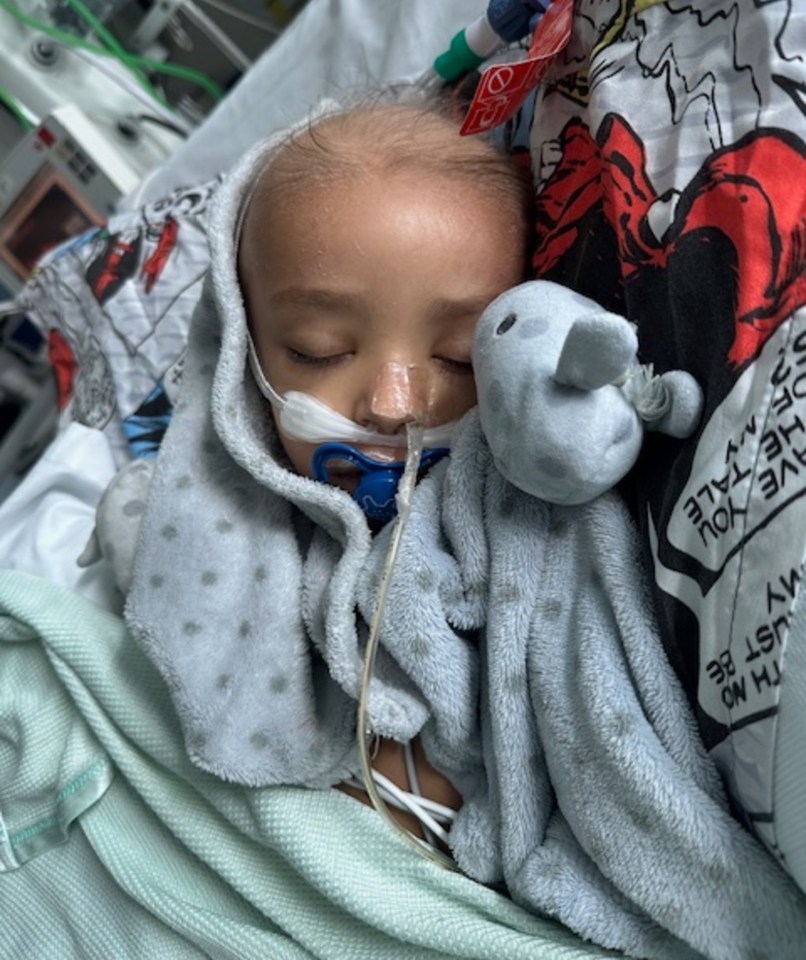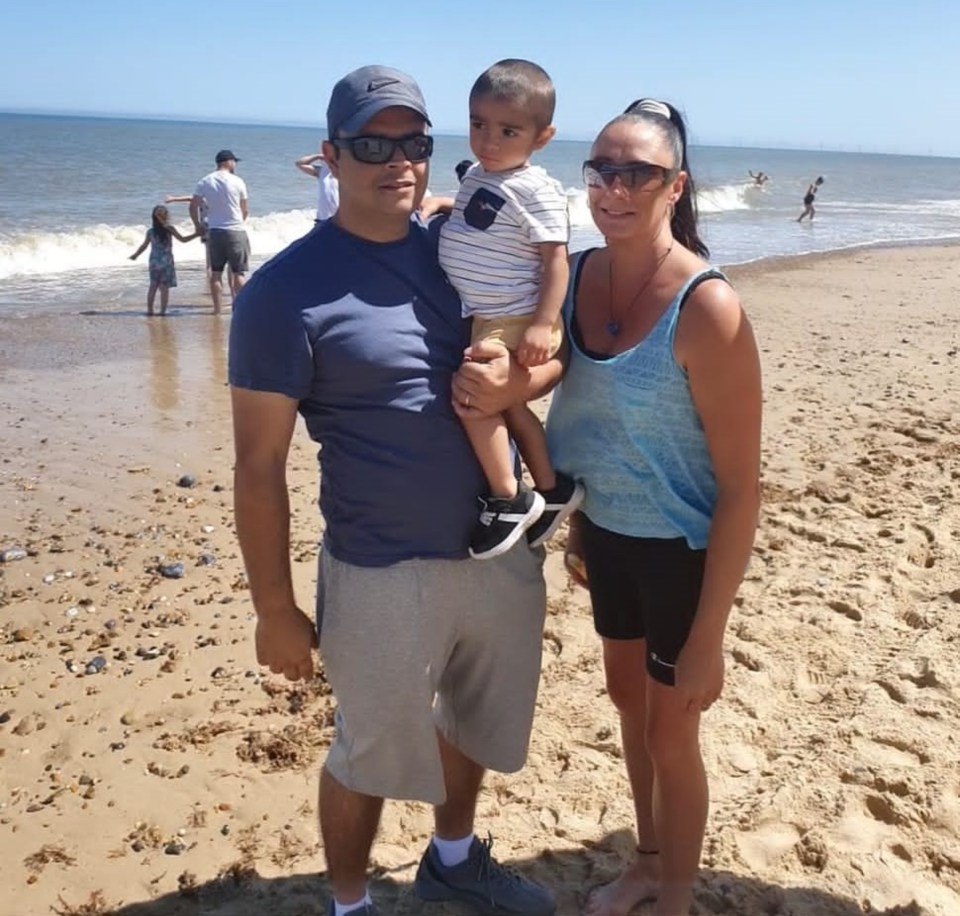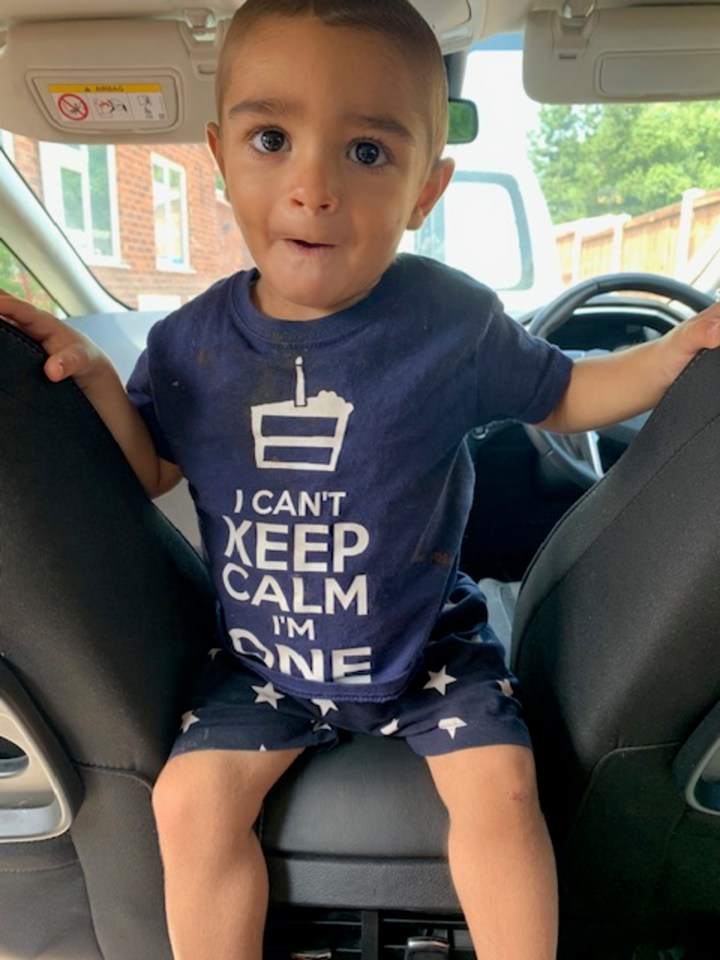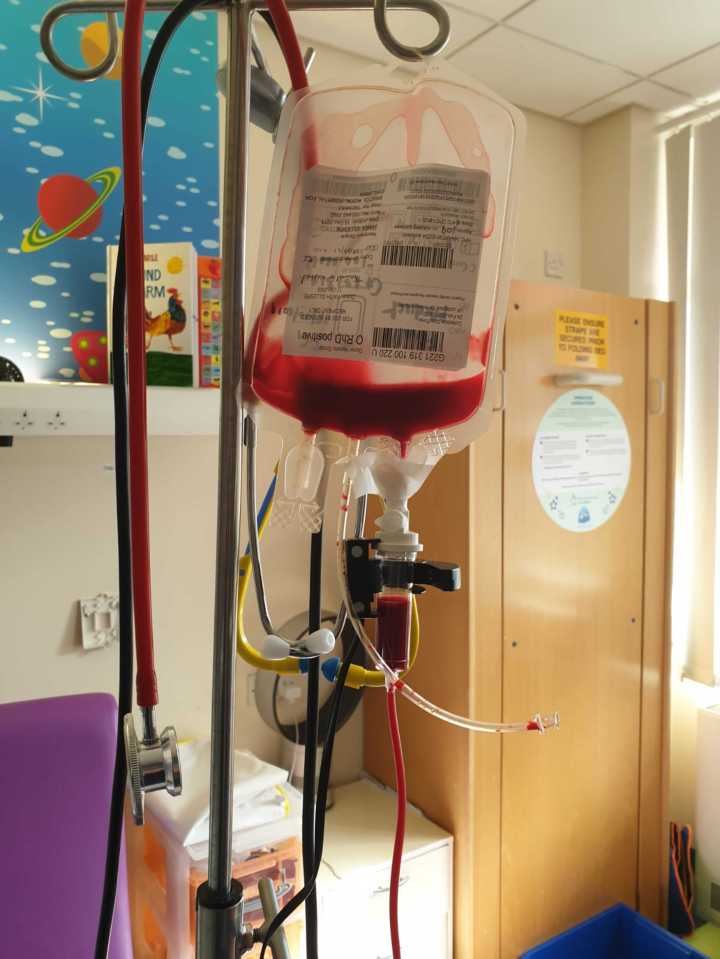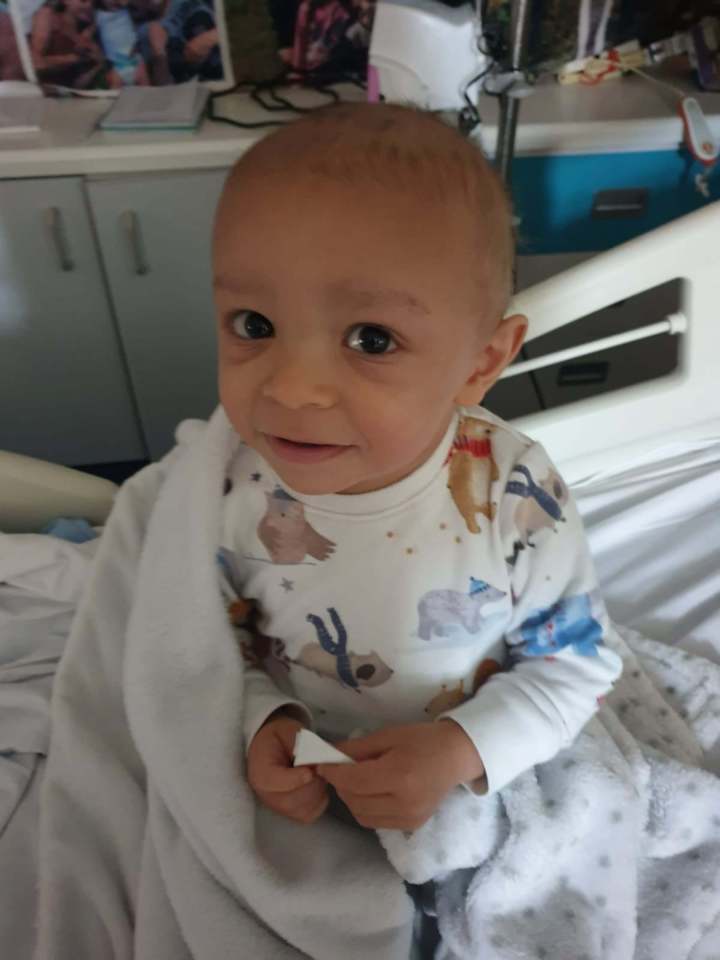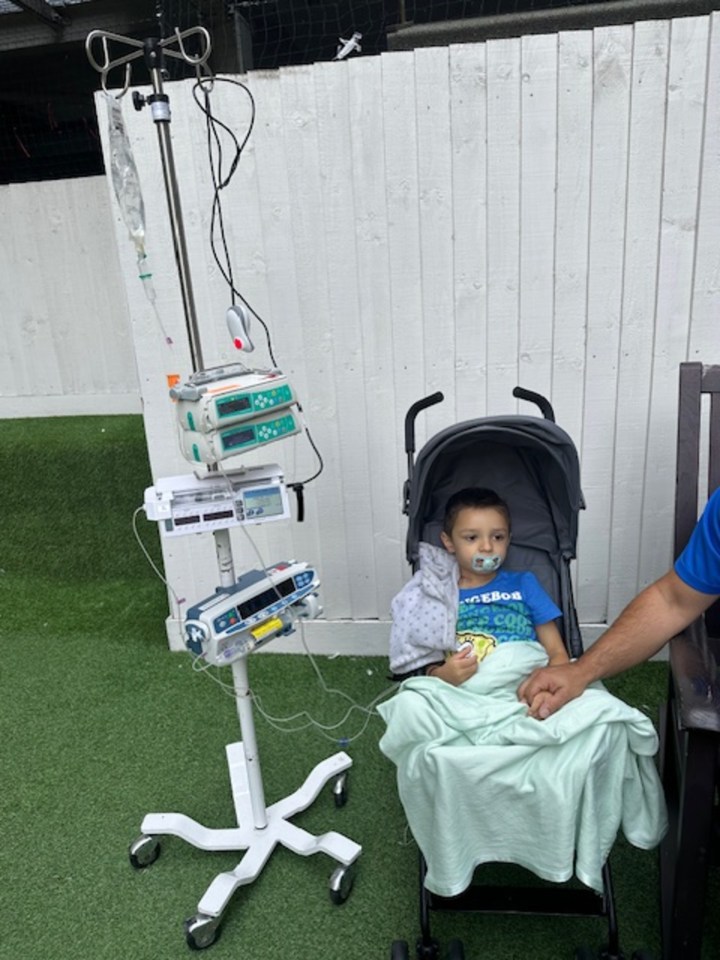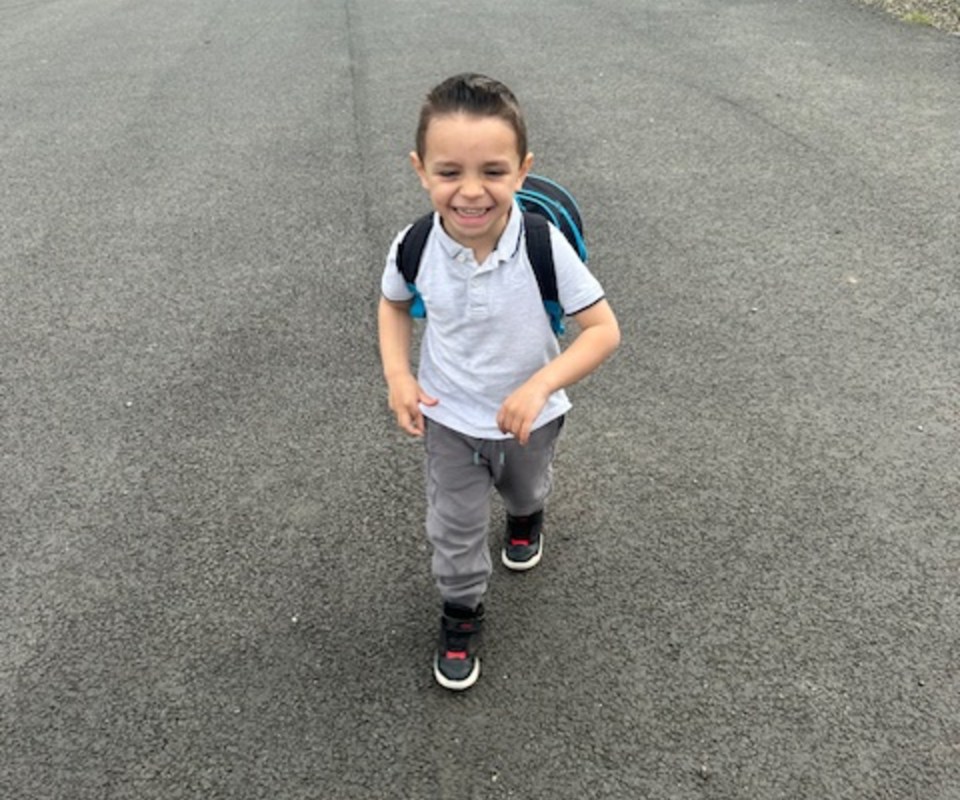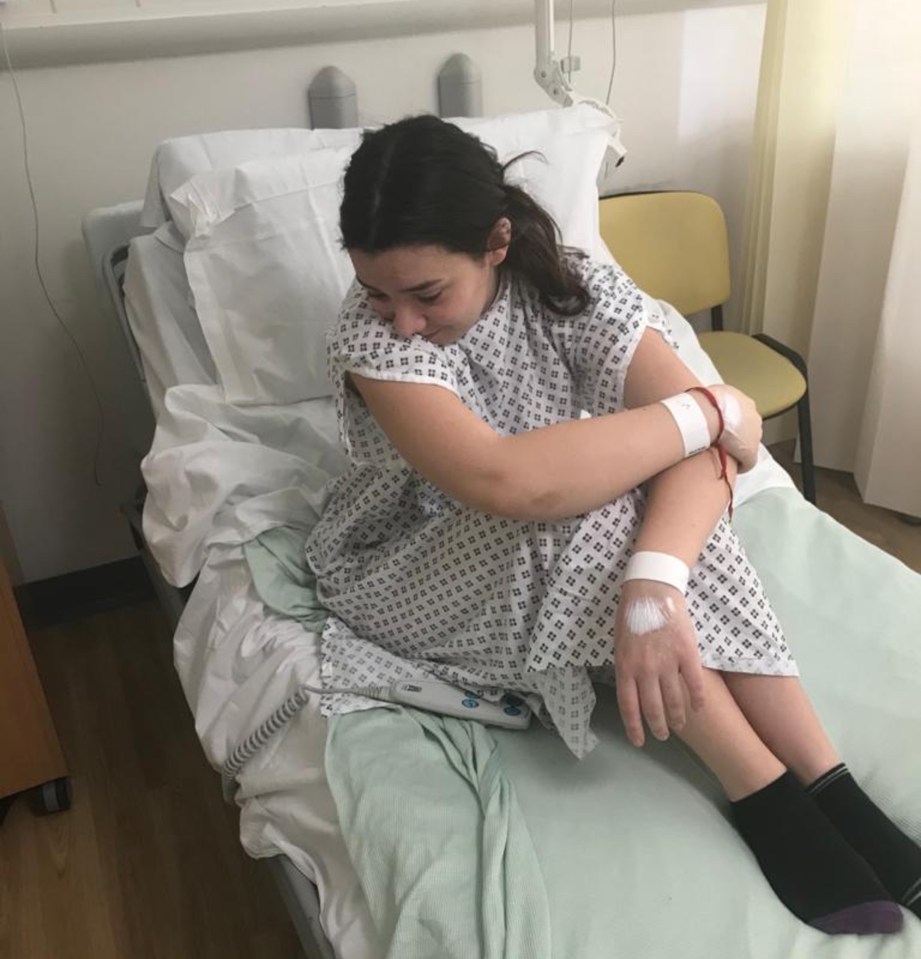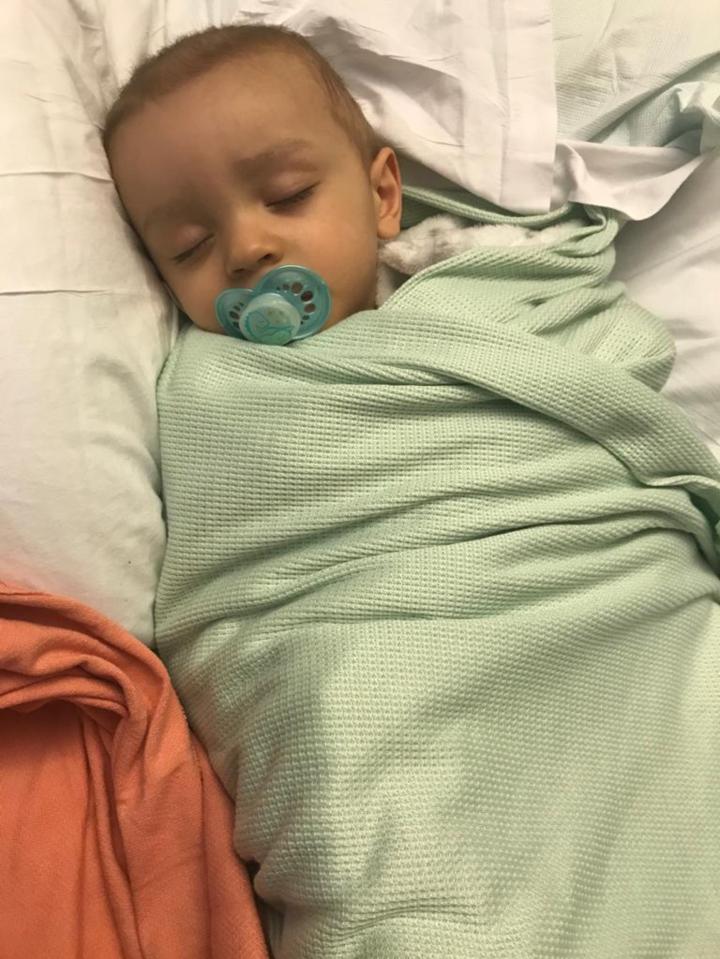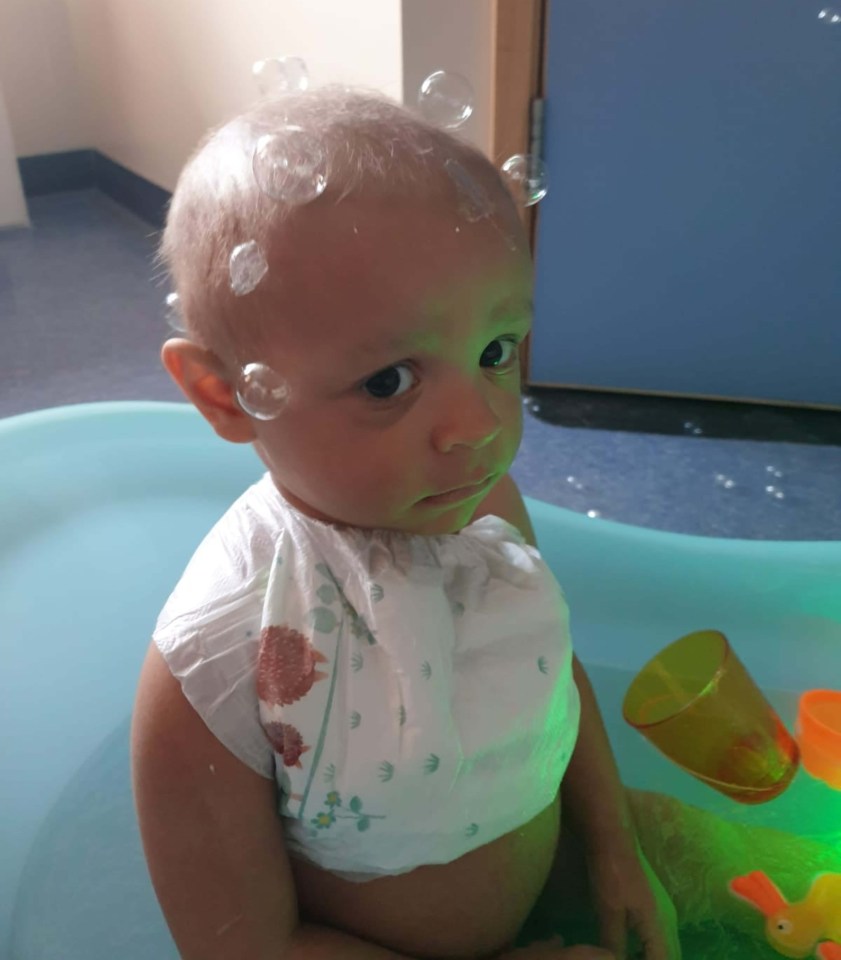THIS boy was given a second chance at life by his sister, who fought through sepsis to help him survive.
Three-year-old James Gillespie, the youngest of six children, was rushed to hospital on Christmas Eve 2020.
He had suffered several unresolved infections that started with a high temperature.
James subsequently stopped eating, was hardly drinking, and was crying and sleeping often.
His GP said he had an infection, and he was treated with different antibiotics over a period of five weeks.
This continued until a few days before Christmas Eve, when his condition worsened, and lymph nodes in his groin, head and tummy descended.
Doctors wanted to run some blood tests, but when mum Annie-Marie went to book them, she was told there would be a two-week wait.
On December 24, the 47-year-old collected the relevant paperwork and took it upon herself to get the tests done at her local hospital.
James was getting more poorly by the minute, and paracetamol wasn’t helping.
The family, from Alpington, Norfolk, got the results two hours later, and the youngster was immediately sent by ambulance to the paediatric intensive care unit at Addenbrooke’s Hospital in Cambridge.
There, medics discovered James had a rare form of blood cancer called mixed phenotype acute leukaemia (MPAL).
It required urgent surgery and intense chemotherapy, and three to four years of ongoing treatment.
And if he hadn’t been brought to the hospital when he was, he wouldn’t have made it through Christmas, Anne-Marie says.
Following surgery on Christmas Day and chemotherapy on Boxing Day, the family received another blow.
James suffered a stroke, meaning he required even more long-term care.
Anne-Marie, a self-employed carer, and her partner David, 45, a self-employed painter and decorator travelled back and forth from Norfolk to juggle looking after James and their five other children.
Anne-Marie then became James’ full-time carer, alongside being her own mother’s carer.
Just when things were looking especially bleak, James’ sister Faith offered a glimmer of hope.
At just 15 years old, she bravely volunteered to become a bone marrow donor for her little brother.
But the family were devastated when Faith developed sepsis following the operation, during which she had two litres of bone marrow extracted from the bottom of her back.
Within a few hours, James was on full life support as his organs began to fail
Anne-Marie
The now-18-year-old spent eight days in hospital recovering, and she was confined to her bed for weeks afterwards.
Anne-Marie said: “I was absolutely in shock when James fell ill, how your life can change at a snap of your fingers.
“Not in a million years would I have thought James would have leukaemia and how our beautiful family’s life would change.
“We are absolutely devastated and it’s extremely hard for the other five children to accept, but we have all become stronger and closer as a family too.”
Despite being “extremely weak”, Faith fought through sepsis to offer James a second chance at life.
For 18 precious months, James knew the joys of remission, thanks to his sister’s incredible gift.
“Faith was only 15 and she really wanted to be part of James’ journey,” Annie-Marie said.
“Unfortunately after a four-and-half hour operation to take the bone marrow from the bottom of her back and weeks of recovery, Faith became unwell.
“David brought her back to hospital just in time, as sepsis had started and she spent another eight days in hospital.
“She was in bed and extremely weak for a few weeks.”
Faith eventually returned to school and went straight into her GCSE exams.
“She did her best with everything going on around her, and it was a massive strain on her mental health at such a young age,” her mum said.
“Faith is now 18 and has just completed her first year apprenticeship at Norfolk and Norwich Hospital and is looking forward to furthering her nursing career.”
High-risk transplant
After six rounds of chemotherapy, James’ only chance was to find a bone marrow donor that was an exact match for his own.
Thankfully, his transplant worked for two years and seven months.
But a few years later, at the age of three, leukaemia reared its head once more.
James was plunged straight back into chemotherapy in October 2023.
Despite his condition being rare and difficult for specialists to diagnose, medical research has moved on.
Doctors put James forward for a high-risk cord transplant, but the family are awaiting further information.
The tot has also been involved in whole genome sequencing (WGS), which is a genetic test that enables experts to discover if there are genes associated with the cancer diagnosis.
It can also provide prognostic information to identify potential new genetic targets and treatments.
How do I donate?
Every 14 minutes, someone in the UK is diagnosed with a blood cancer.
A stem cell transplant from a stranger can be their only hope.
To become a donor, you need to join the stem cell register.
Complete the online form to request a swab pack. This will be posted to you. You then complete it and post it back.
It could take years before you are identified as a ‘match’ with a patient. And you may never be called on at all.
If you are, you must undergo a thorough examination to make sure there are no medical reasons you cannot donate.
There are two types of donation:
- Blood stem cell donation: The most common process is where you receive injections for four days to boost your stem cells. On the fifth day, you are connected to a machine which collects the extra stem cells, it’s sort of like giving blood.
- Bone marrow donation: Stem cells are removed from your hip bones while under a general anaesthetic in the hospital.
It is important to point out that no medical procedure is risk free, but experts say 16 or 17-year-old donors are at no more risk than an adult.
James is one of 11 patients involved in a project to help get these results in 48 hours.
This can then influence treatment and potentially improve survival rates.
Anne-Marie said: “At the beginning, a 100 per cent bone marrow match is what doctors thought was the best form of treatment and this did work for two years and seven months.
“Then, unfortunately, on September 30, James relapsed.
“Research has moved on since his diagnosis, and doctors now know that James’ type of cancer could be treated with a cord transplant.
“We are still waiting to hear whether James will be well enough to have this, since on October 6, while under anaesthetic for a routine lumbar punch, James got sick and his lung collapsed, leaving only half of his right lung working.
“Within a few hours, James was on full life support as his organs began to fail.
“He was suffering from sepsis and he remained on life support for two weeks.”
Now James is in recovery, and has managed to sit up in his bed.
“The strength of James absolutely astonishes us all here, especially the doctors and nurses,” David said.
“After three weeks in PICU on life support, James wanted to get out of bed and proved to us he could.
“Thank you God for hearing our prayers everyday and giving James the strength to fight through this.
“He is truly an amazing little boy.
“James still has a very long way to go but this is an amazing step forward.”
Leukaemia – everything you need to know
LEUKAEMIA is a type of blood cancer that affects cells in bone marrow and attacks the immune system.
There are several types of leukaemia but what are the symptoms and is it treatable?
What causes leukaemia?
In most cases of leukaemia, there is no obvious cause.
It is a cancer that leads to the body making too many abnormal white blood cells which means the body is less likely to be able to defend itself against infection.
These blood cells are not fully developed and are called leukaemia cells.
The disease is often classified as the type of cell affected (myeloid or lymphatic) and how it progresses (acute or chronic).
What are the symptoms of leukaemia?
There are no specific signs or symptoms which would allow a doctor to make a diagnosis without lab tests.
In all types of leukaemia, symptoms are more commonly caused by a lack of normal blood cells than by the presence of abnormal white cells.
As the bone marrow becomes full of leukaemia cells, it is unable to produce the large numbers of normal blood cells which the body needs.
This can lead to:
- Anaemia
- Weakness and tiredness
- More frequent infections
- Fever
- Bleeding and bruising
What are the different types of leukaemia?
There are four main types of leukaemia.
They are:
Acute Lymphocytic Leukaemia (ALL) – A rapidly progressing form of the disease. More common in children.
Acute Myeloid Leukaemia (AML) – Rapidly progressive. More common in adults.
Chronic Lymphocytic Leukaemia (CLL) – Slowly progressing form and more common in adults.
Chronic Myeloid Leukaemia (CML) – Progresses slowly and is more common in adults.
Can leukaemia be treated?
Currently, there are five ways leukaemia can be treated. They are:
Chemotherapy: These are cell-killing drugs which kill and/or stop them from dividing. Chemotherapy is often given in blocks or cycles of treatment. One cycle of treatment will consist of a series of doses of chemotherapy followed by a break for the healthy cells to recover.
Radiation therapy: This treatment uses high-energy radiation to kill cancer cells. It is not used to treat all types of leukaemia.
Targeted therapy: Drugs which specifically recognise and kill leukaemia cells.
Biological therapy: A treatment which uses the immune system to destroy leukaemia cells.
Stem cell transplant: Younger patients may be given a stem cell transplant (bone marrow transplant). This may be done using your own healthy stem cells or stem cells from a donor. This is most commonly done for acute leukaemia if chemotherapy does not cure the disease.
